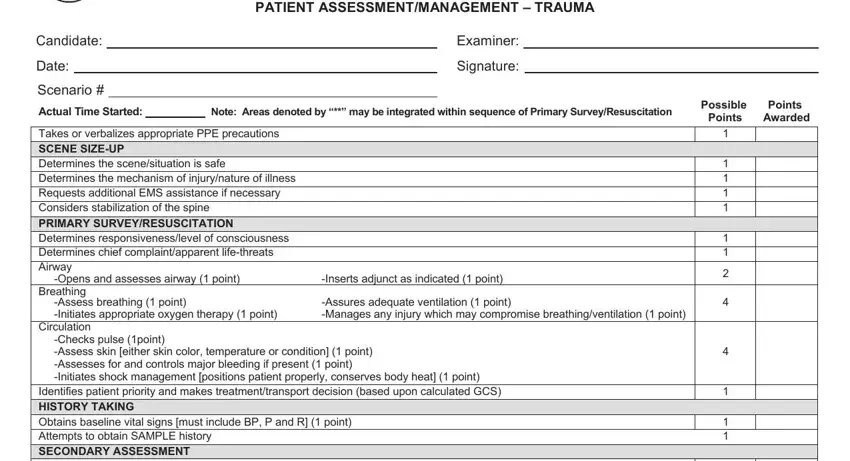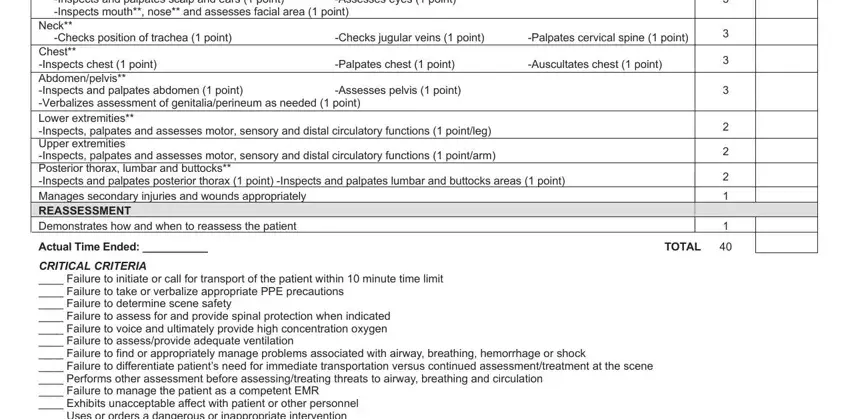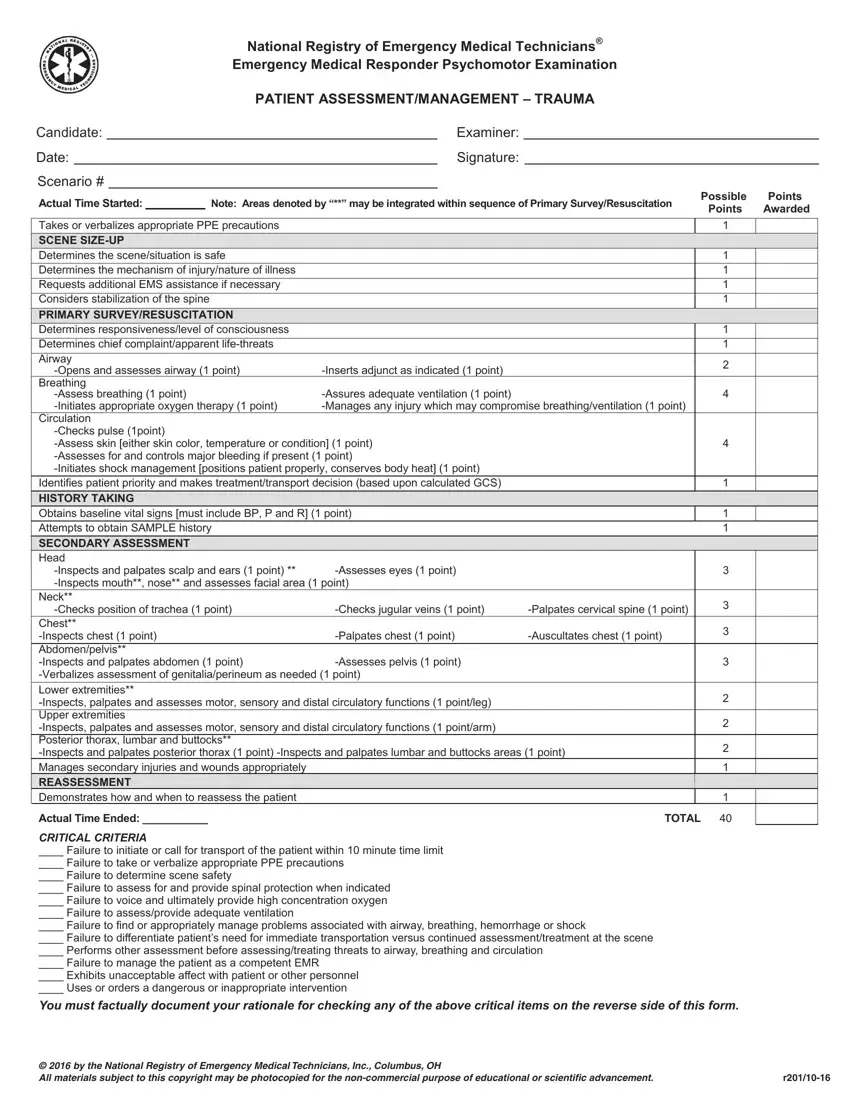You can easily prepare documents using our PDF editor. Editing the emt trauma assessment cheat sheet document is straightforward in case you check out these actions:
Step 1: On the following page, press the orange "Get form now" button.
Step 2: Once you enter our emt trauma assessment cheat sheet editing page, there'll be all of the functions you can undertake about your document at the upper menu.
Prepare the emt trauma assessment cheat sheet PDF by typing in the details needed for every single section.

Make sure you write down the necessary details in the Inspects and palpates scalp and, Assesses eyes point, Neck, Checks position of trachea point, Checks jugular veins point, Palpates cervical spine point, Palpates chest point, Chest Inspects chest point, Assesses pelvis point, Auscultates chest point, Actual Time Ended, TOTAL, and CRITICAL CRITERIA Failure to field.

Step 3: Choose the Done button to assure that your completed document could be exported to each gadget you use or sent to an email you specify.
Step 4: Make copies of the template. It will prevent potential complications. We don't look at or display your data, for that reason you can be confident it's going to be safe.


